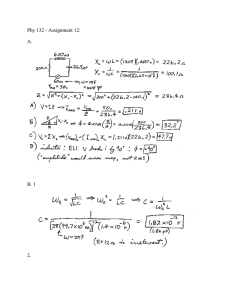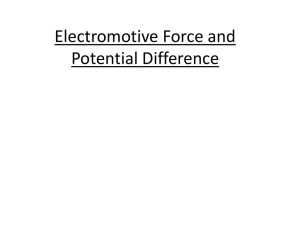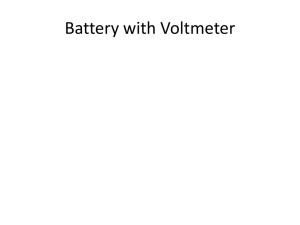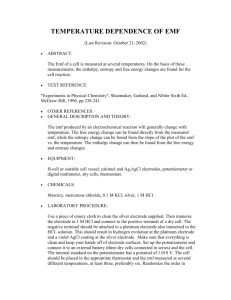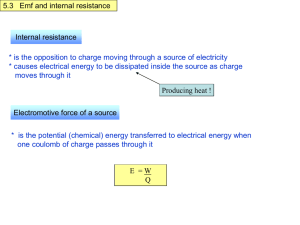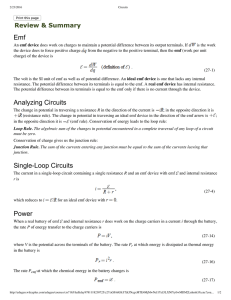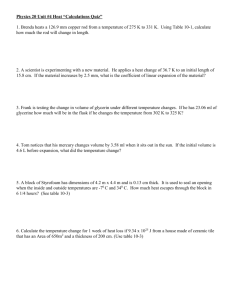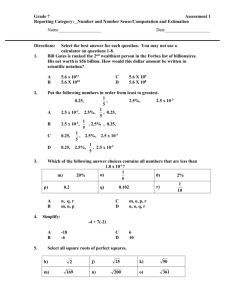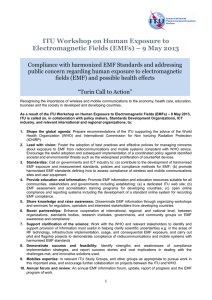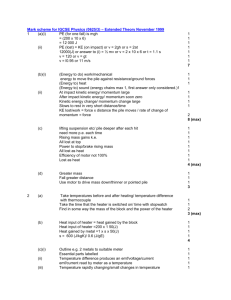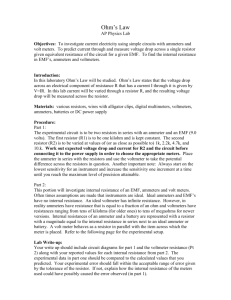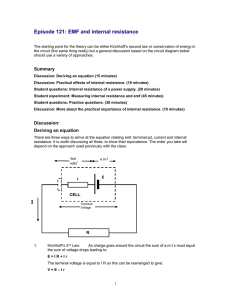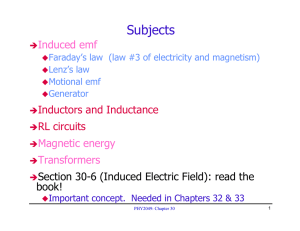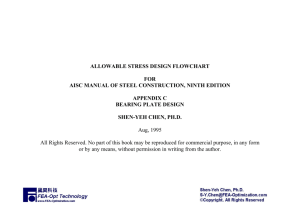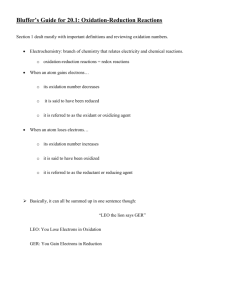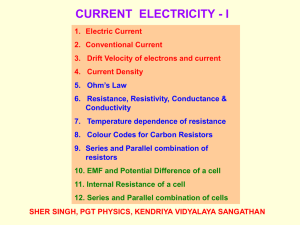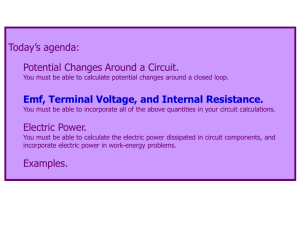TAP 121-4 Questions on EMF and Internal Resistance
advertisement
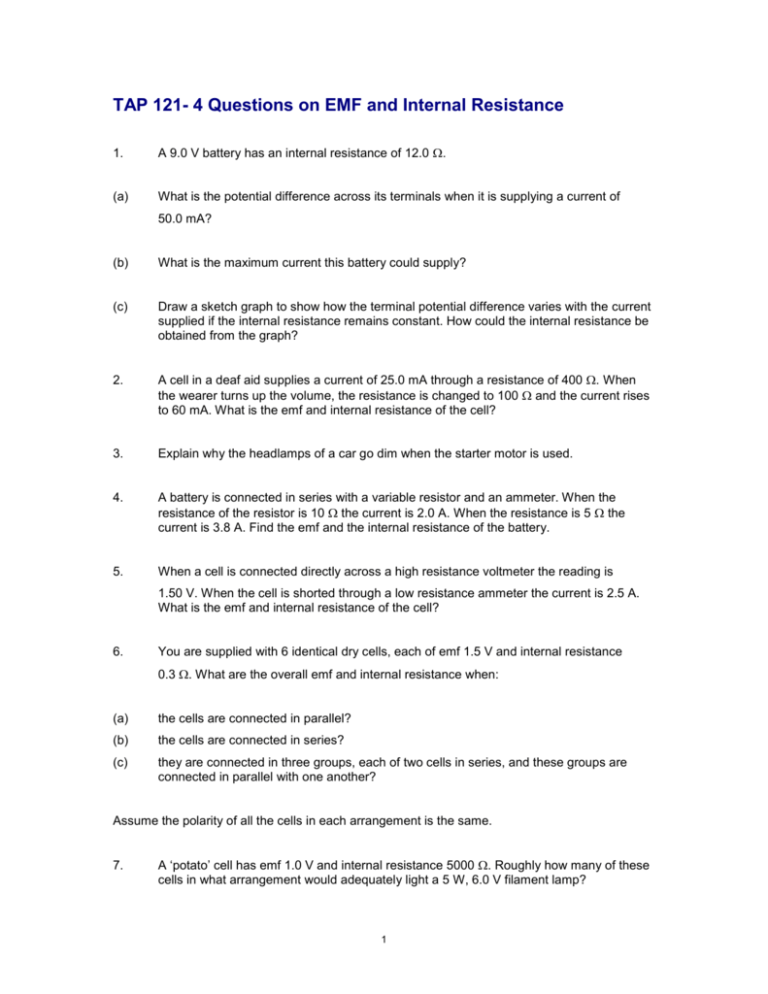
TAP 121- 4 Questions on EMF and Internal Resistance 1. A 9.0 V battery has an internal resistance of 12.0 . (a) What is the potential difference across its terminals when it is supplying a current of 50.0 mA? (b) What is the maximum current this battery could supply? (c) Draw a sketch graph to show how the terminal potential difference varies with the current supplied if the internal resistance remains constant. How could the internal resistance be obtained from the graph? 2. A cell in a deaf aid supplies a current of 25.0 mA through a resistance of 400 . When the wearer turns up the volume, the resistance is changed to 100 and the current rises to 60 mA. What is the emf and internal resistance of the cell? 3. Explain why the headlamps of a car go dim when the starter motor is used. 4. A battery is connected in series with a variable resistor and an ammeter. When the resistance of the resistor is 10 the current is 2.0 A. When the resistance is 5 the current is 3.8 A. Find the emf and the internal resistance of the battery. 5. When a cell is connected directly across a high resistance voltmeter the reading is 1.50 V. When the cell is shorted through a low resistance ammeter the current is 2.5 A. What is the emf and internal resistance of the cell? 6. You are supplied with 6 identical dry cells, each of emf 1.5 V and internal resistance 0.3 . What are the overall emf and internal resistance when: (a) the cells are connected in parallel? (b) the cells are connected in series? (c) they are connected in three groups, each of two cells in series, and these groups are connected in parallel with one another? Assume the polarity of all the cells in each arrangement is the same. 7. A ‘potato’ cell has emf 1.0 V and internal resistance 5000 . Roughly how many of these cells in what arrangement would adequately light a 5 W, 6.0 V filament lamp? 1 Answers and Worked Solutions 1. (a) (b) 2. pd = E – I r = 9 – (50 x 10-3 x 12) = 8.4 V Max current = E/r = 9 / 12 = 0.75 A E = I(R +r) E = 25 x 10-3 (400 + r) and E = 60 x 10-3 (100 + r) So 25 x 10-3 (400 + r) = 60 x 10-3 (100 + r) so r = 114.3 E = 10 + (25 x 10-3 x 114.3) = 12.86 V 4. E = I(R +r) E = 2 (10 + r) and E = 3.8 (5 + r) so r= 0.56 E = 20 + (2 x 0.56) = 21.1 V 5. E = 1.5 V E = I r so 1.5 V = 2.5 A r and r = 0.6 6. (a) 7. 1.5 V, 0.05 (b) 9 V, 1.8 (c) 3V, 0.2 Required pd = 6 V and power = 5 W so current required = P/V = 5/6 = 0.83 A 6 cells in series have an internal resistance of 6 x 5000 = 30000 . If the total internal resistance is low, say 0.1 then 6 - 0.083 = 5.92 V roughly which would light the lamp well, so 30,000/n = 0.1 and n = number of combinations = 300,000 so total number of cells is 6 x 300,000 = 1,800,000 The answer depends on what you mean by adequately light. Would external pd of 5 V and total internal resistance 1 be sufficient for example? 2
